A&P 1 101 Module 1 Exam Questions and Answers-Portage Learning
Document Content and Description Below
A&P 1 101 Module 1 Exam Questions and Answers-Portage Learning-All multiple choice questions have one answer unless otherwise specified. Choose the best response to the question with the information p... rovided. 1. What is the study of the function of the human body? A. Anatomy B. Physiology C. Anabolism D. Catabolism E. Metabolism B. Physiology 2. Epithelium is an example of what level of organization in the human body? A. Chemical B. Organ C. Cellular D. Tissue E. Organ system D. Tissue 3. What is the synthesis of more complex substances? A. Anatomy B. Physiology C. Anabolism D. Catabolism E. Metabolism C. Anabolism Exam Page 2 Note: Essay answers must clearly be in your own words. All multiple choice questions have one answer unless otherwise specified. Choose the best response to the question with the information provided. 1. List the four basic types of tissues. The four basic types of tissues are: 1. Epithelial tissue 2. Connective tissue 3. Muscle tissue 4. Nervous tissue 2. List the three layers of the skin in order from deep to superficial. The deepest layer of the skin should be at the top of your list. To receive credit the layers must be in this order. The three layers of skin in order from deep to superficial are: 1. hypodermis 2. dermis 3. epidermis 3. Testosterone contributes to muscle strength and bone mass. Based upon your learning of metabolism, would it be considered an anabolic or catabolic hormone? Explain why. Testosterone is an anabolic hormone. Exam Page 3 Note: Essay answers must clearly be in your own words. All multiple choice questions have one answer unless otherwise specified. Choose the best response to the question with the information provided. 1. What anatomical orientation term is used to indicate "toward the back of the body"? A. Superior B. Inferior C. Ventral D. Dorsal E. Medial D. Dorsal 2. What anatomical orientation term is used to indicate "toward the lower part of a structure"? A. Superior B. Inferior C. Ventral D. Dorsal E. Medial B. Inferior 3. What anatomical orientation term is used to indicate "toward the body surface"? Superficial is the anatomical orientation term is used to indicate "toward the body surface." 4. What anatomical orientation term is used to indicate "closer to the point of attachment of a limb"? Proximal is the anatomical orientation term is used to indicate "closer to the point of attachment of a limb." 5. You are looking at a diagram of a patient standing in anatomical position. On the sheet of paper containing the diagram, which thumb points to the right side of the paper, right or left? The left thumb points to the right side of the paper. [Show More]
Last updated: 1 year ago
Preview 1 out of 6 pages

Buy this document to get the full access instantly
Instant Download Access after purchase
Add to cartInstant download
We Accept:

Also available in bundle (1)

A&P 1 101 Module 1-8 Exam BUNDLE Comprehensive set Portage Learning (ALL GRADED A+)
A&P 1 101 Module 1-8 Exam BUNDLE Comprehensive set Portage Learning (ALL GRADED A+)
By PROF 1 year ago
$47.5
8
Reviews( 0 )
$13.50
Document information
Connected school, study & course
About the document
Uploaded On
Oct 11, 2022
Number of pages
6
Written in
Additional information
This document has been written for:
Uploaded
Oct 11, 2022
Downloads
0
Views
47






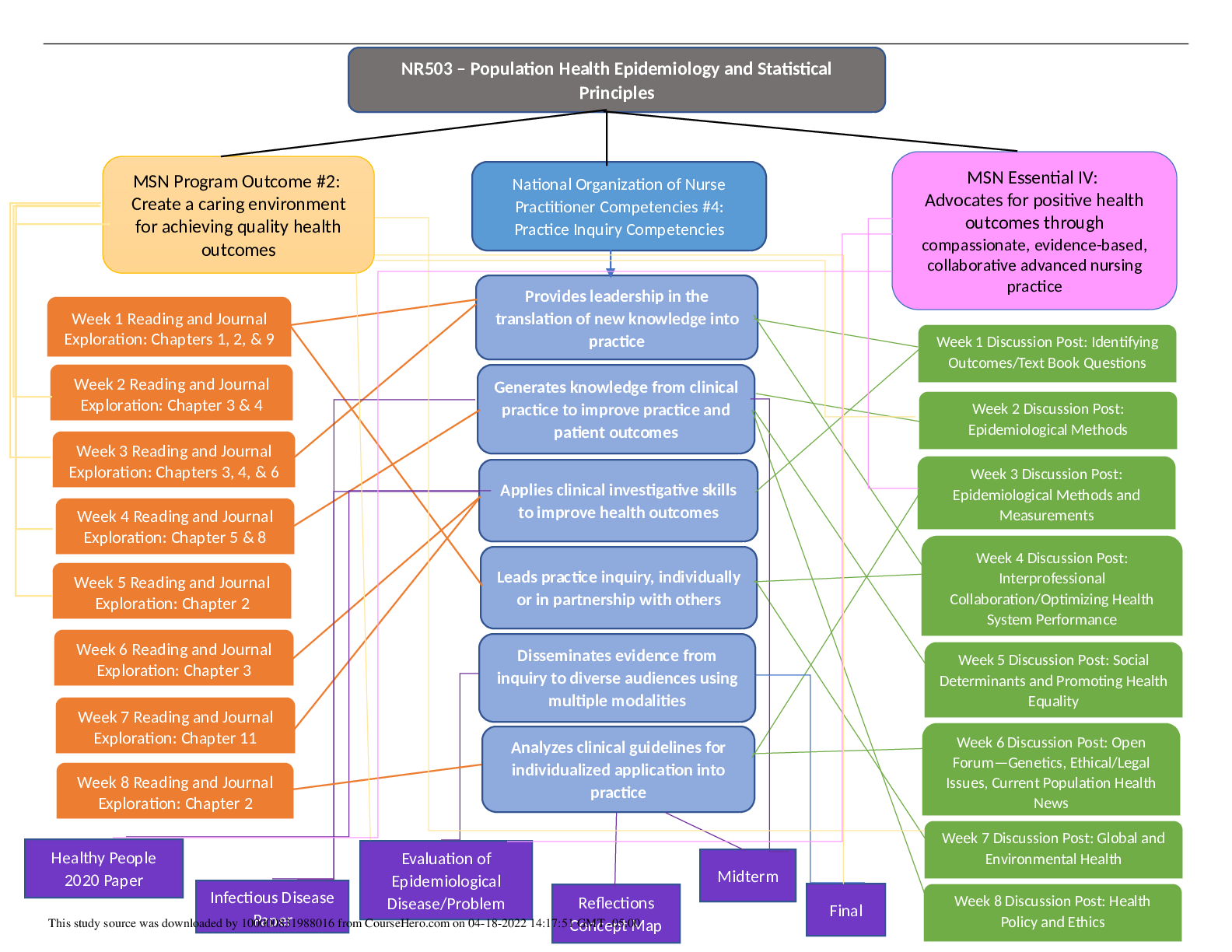

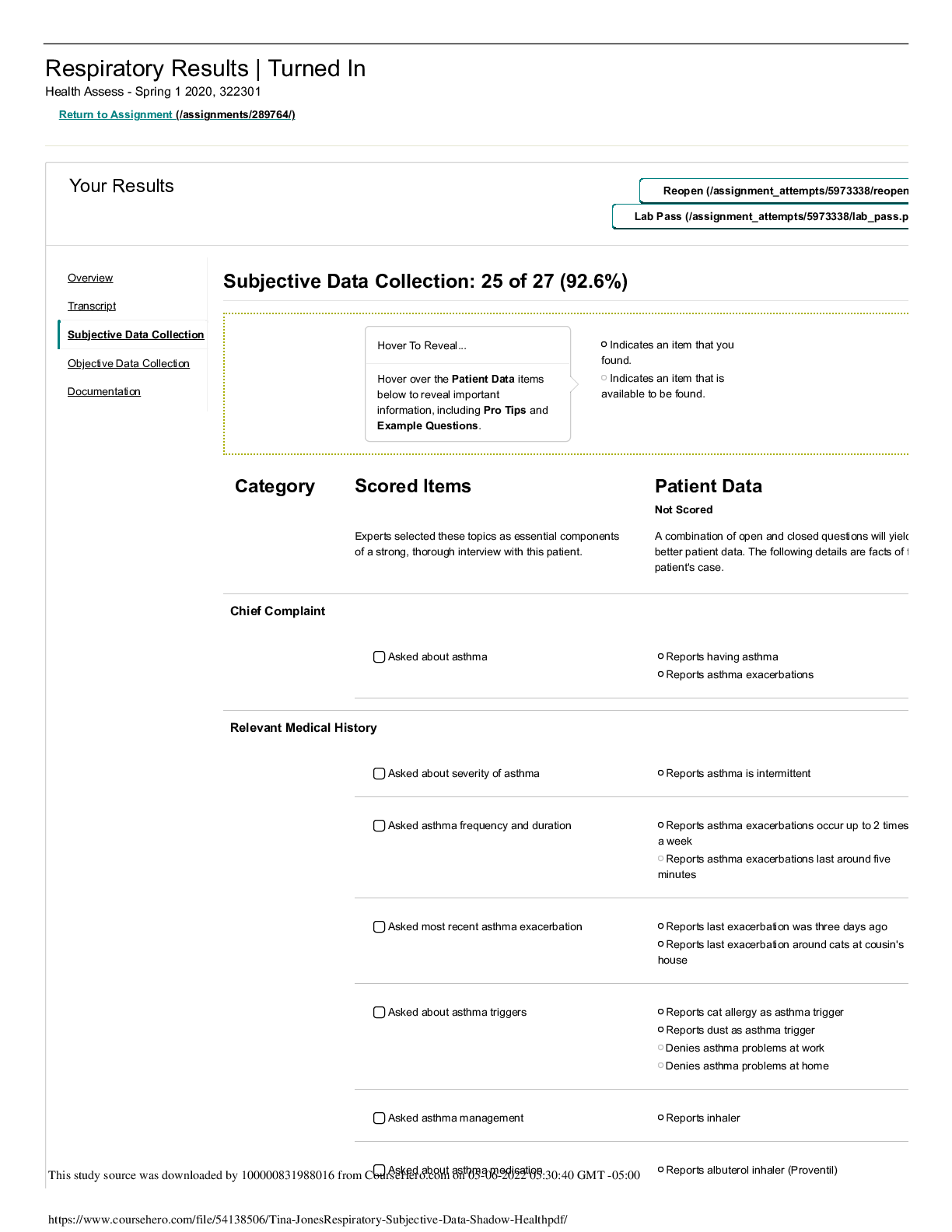
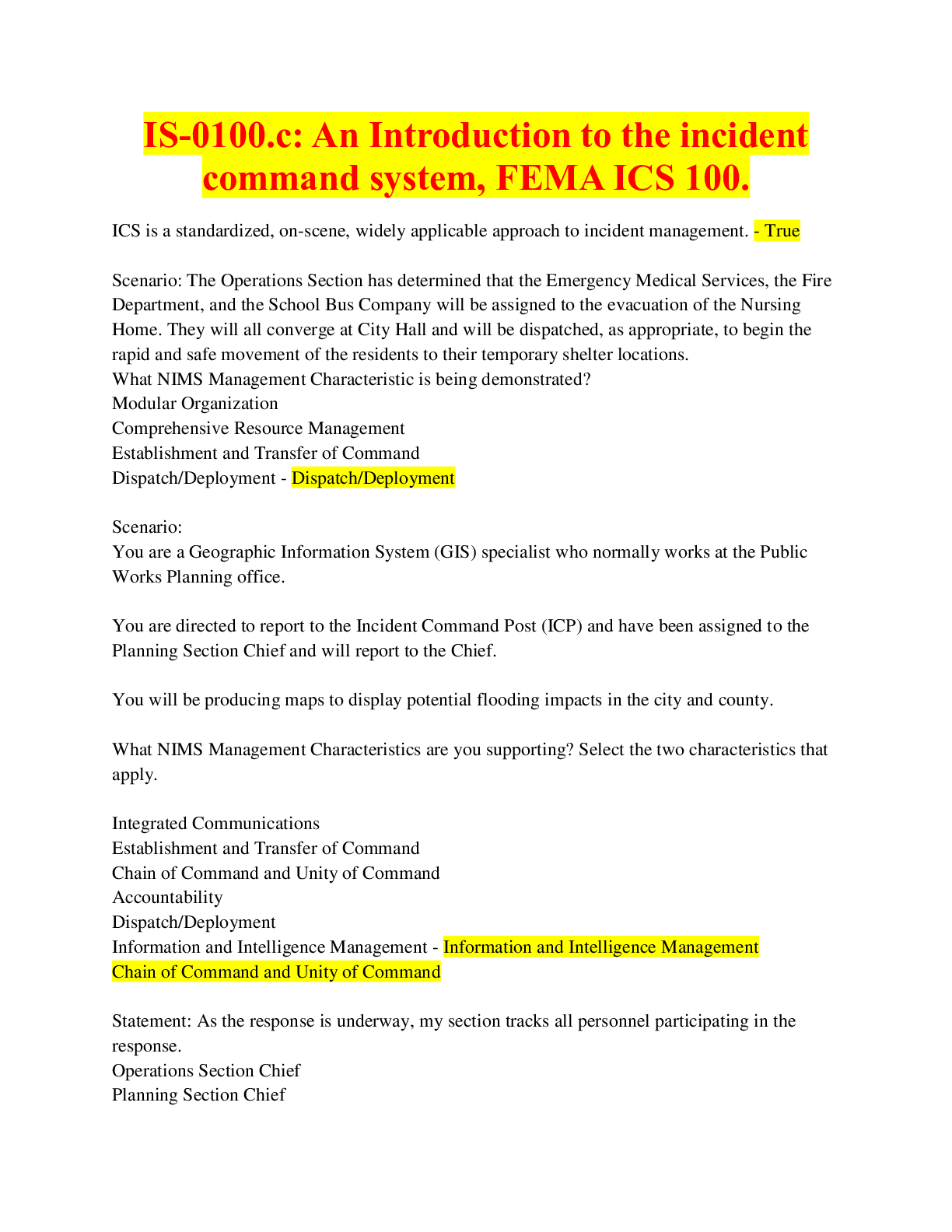



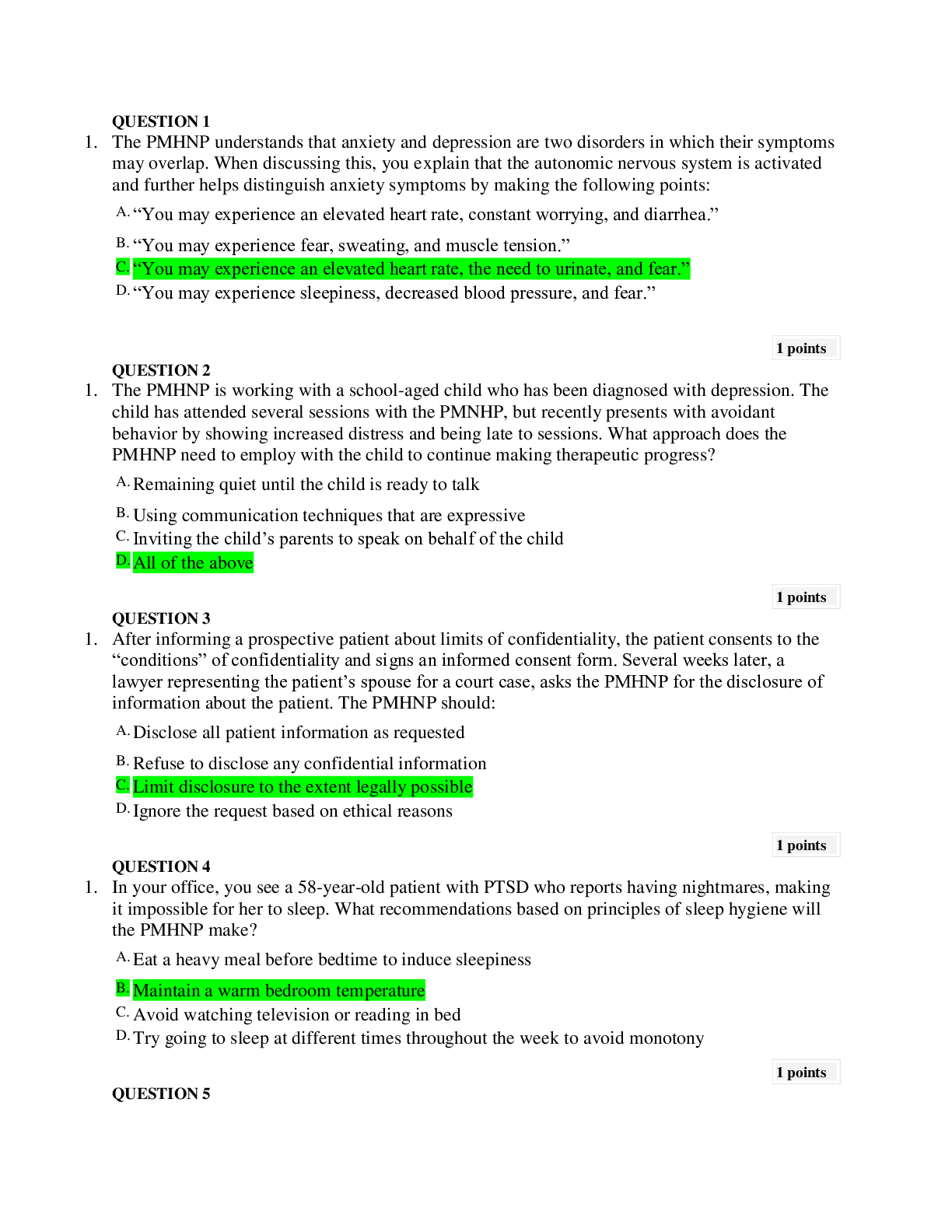
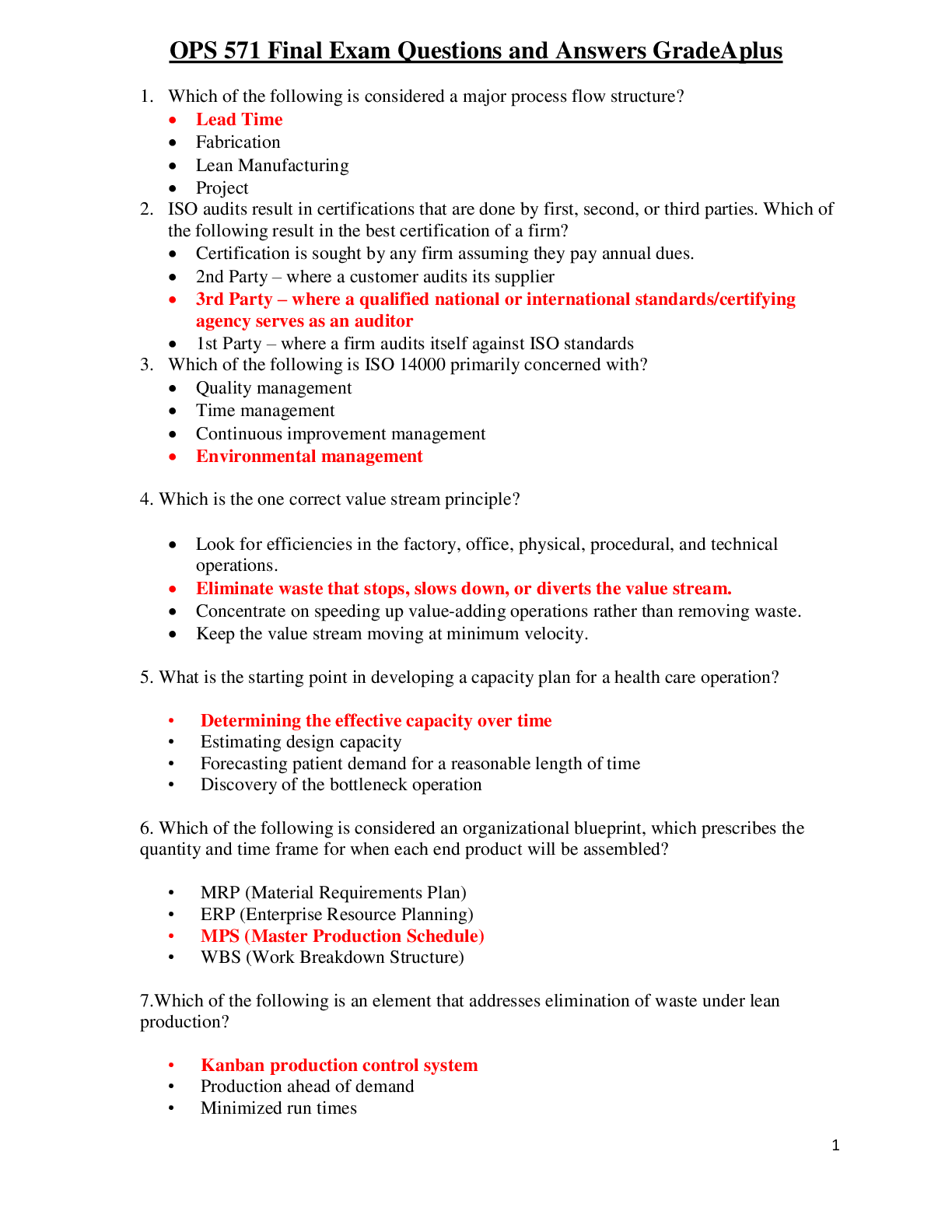
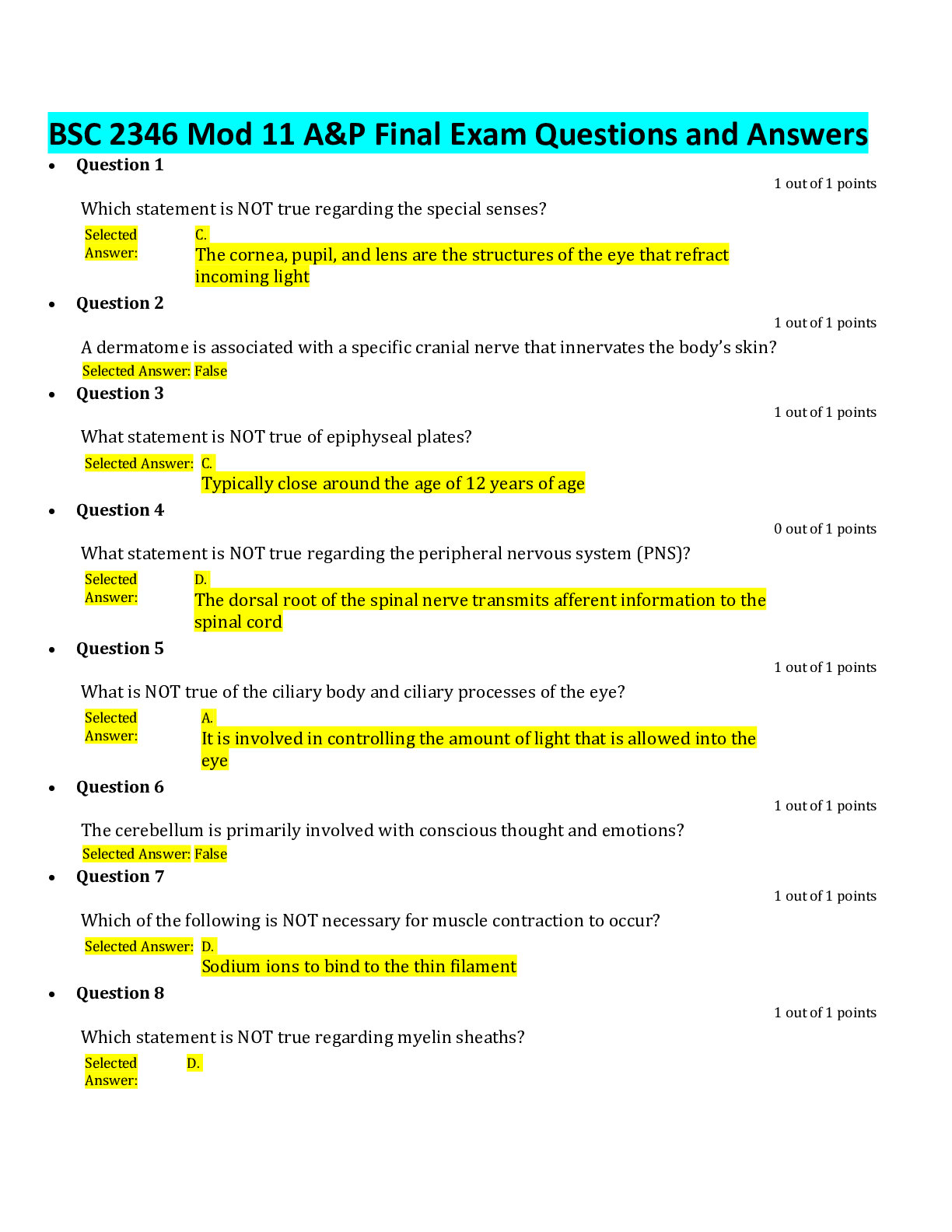


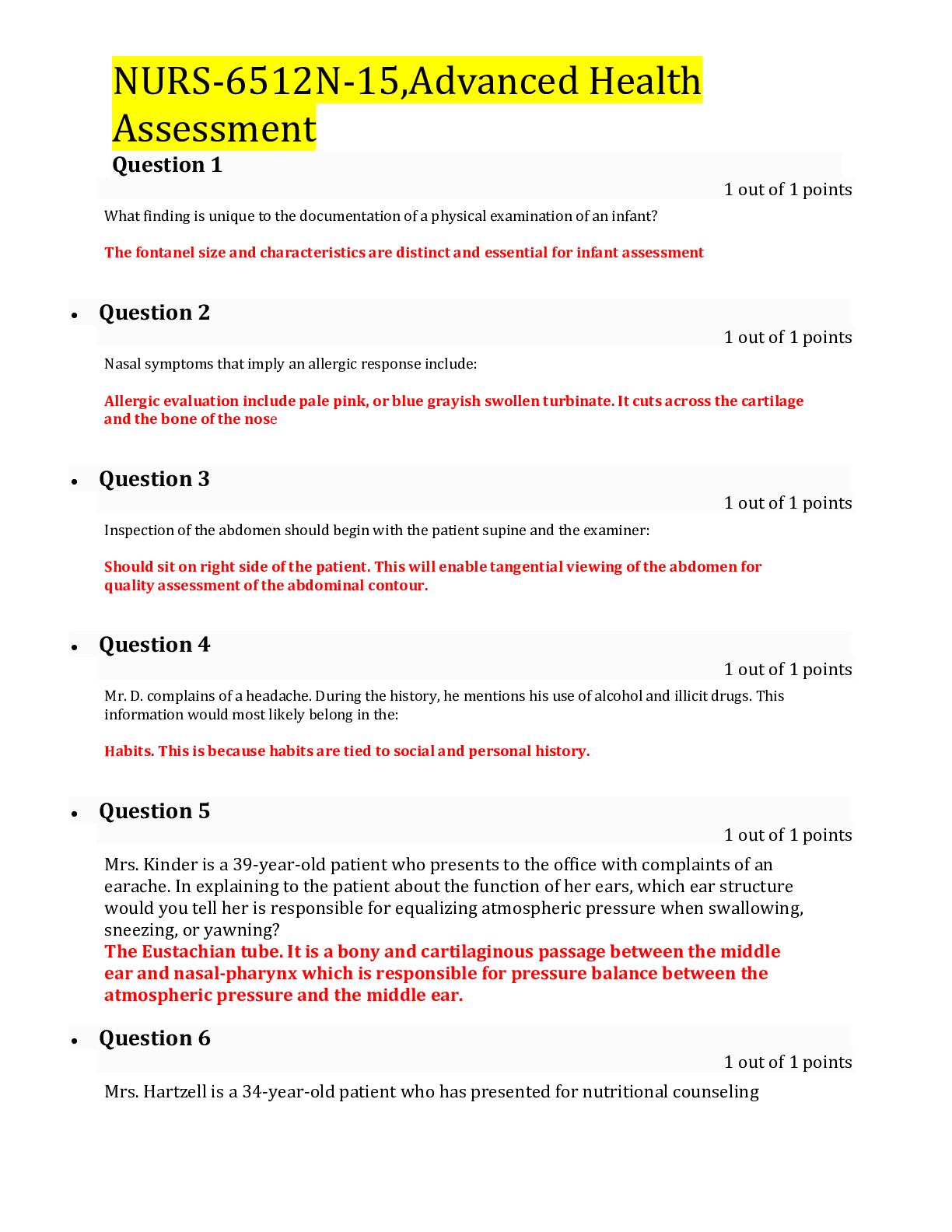
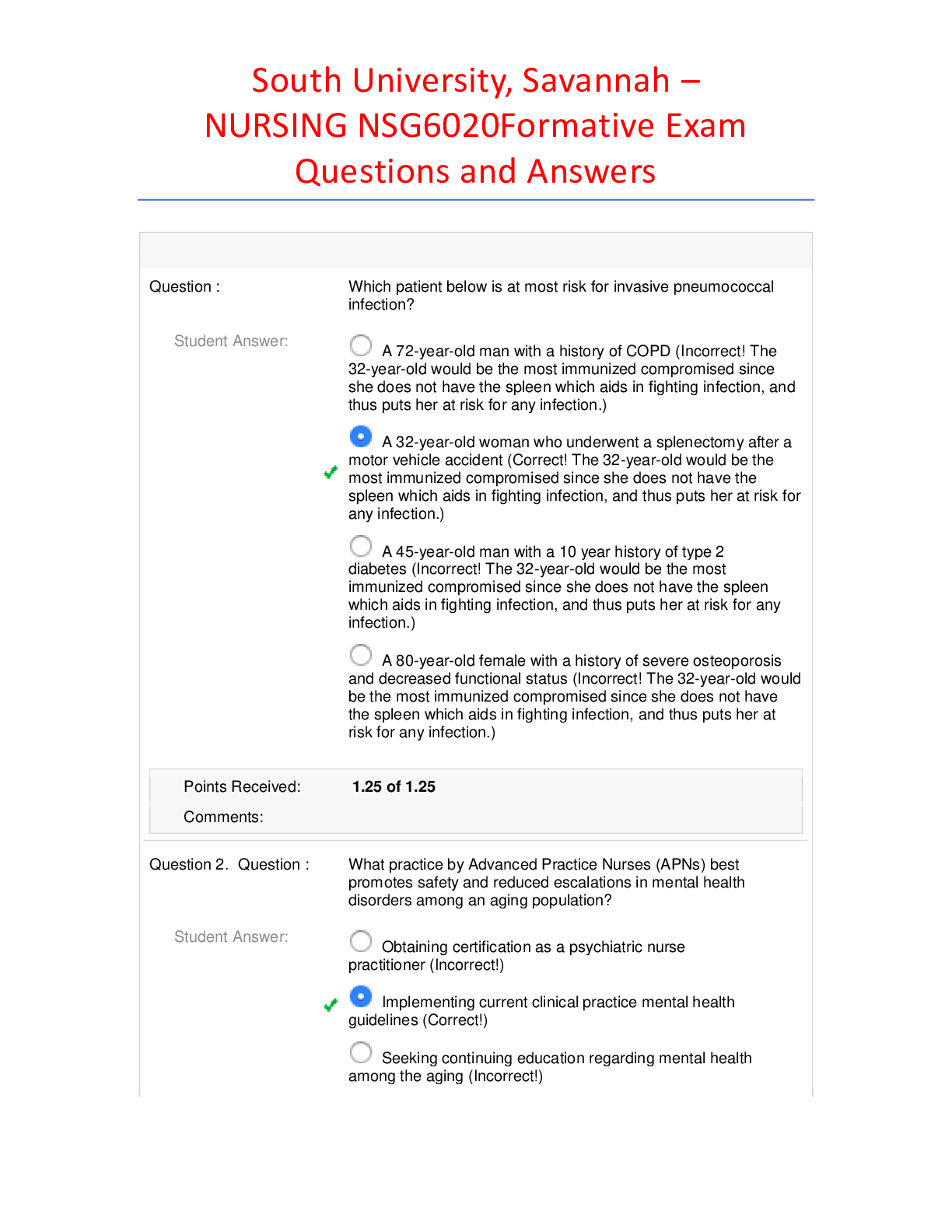
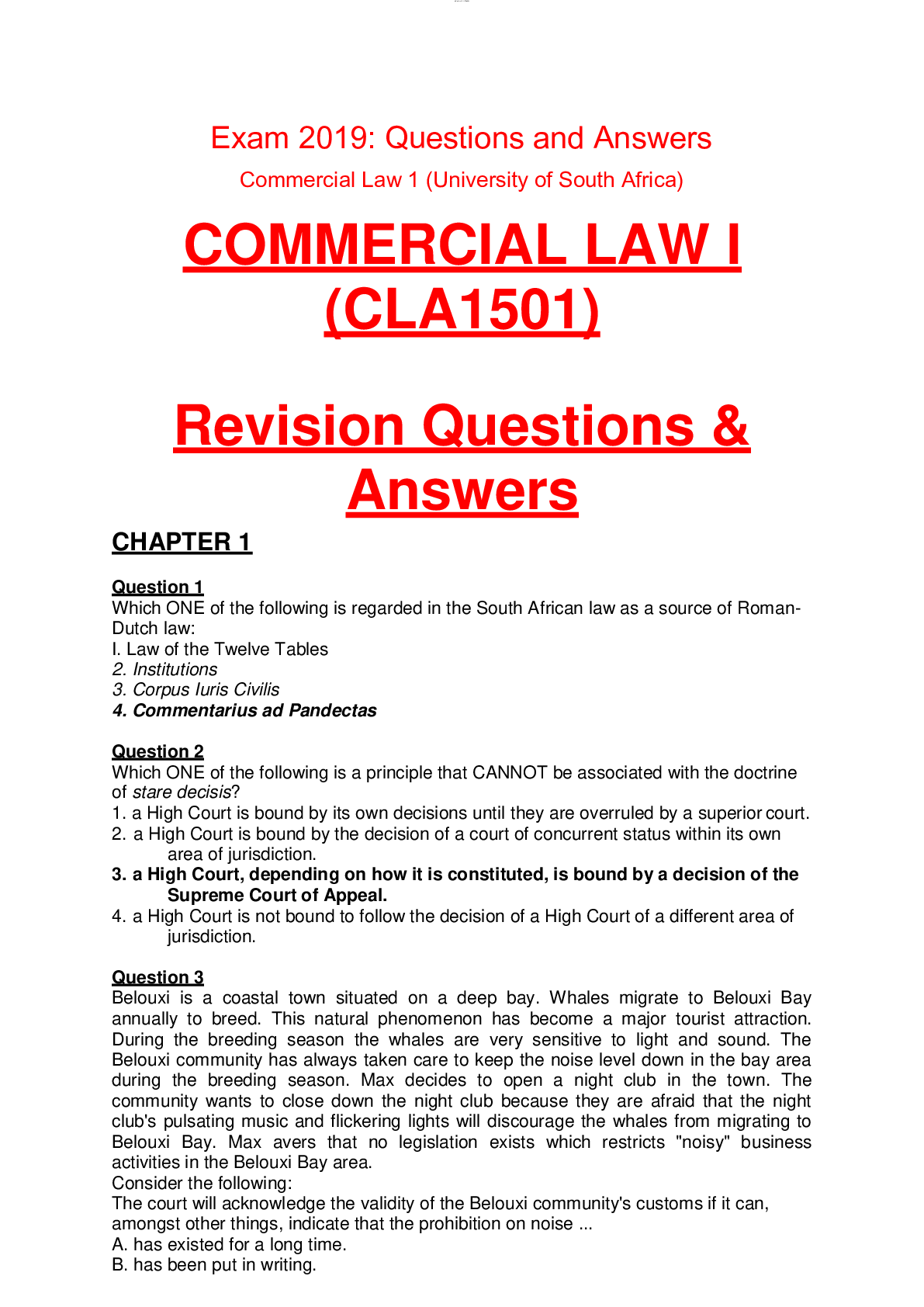

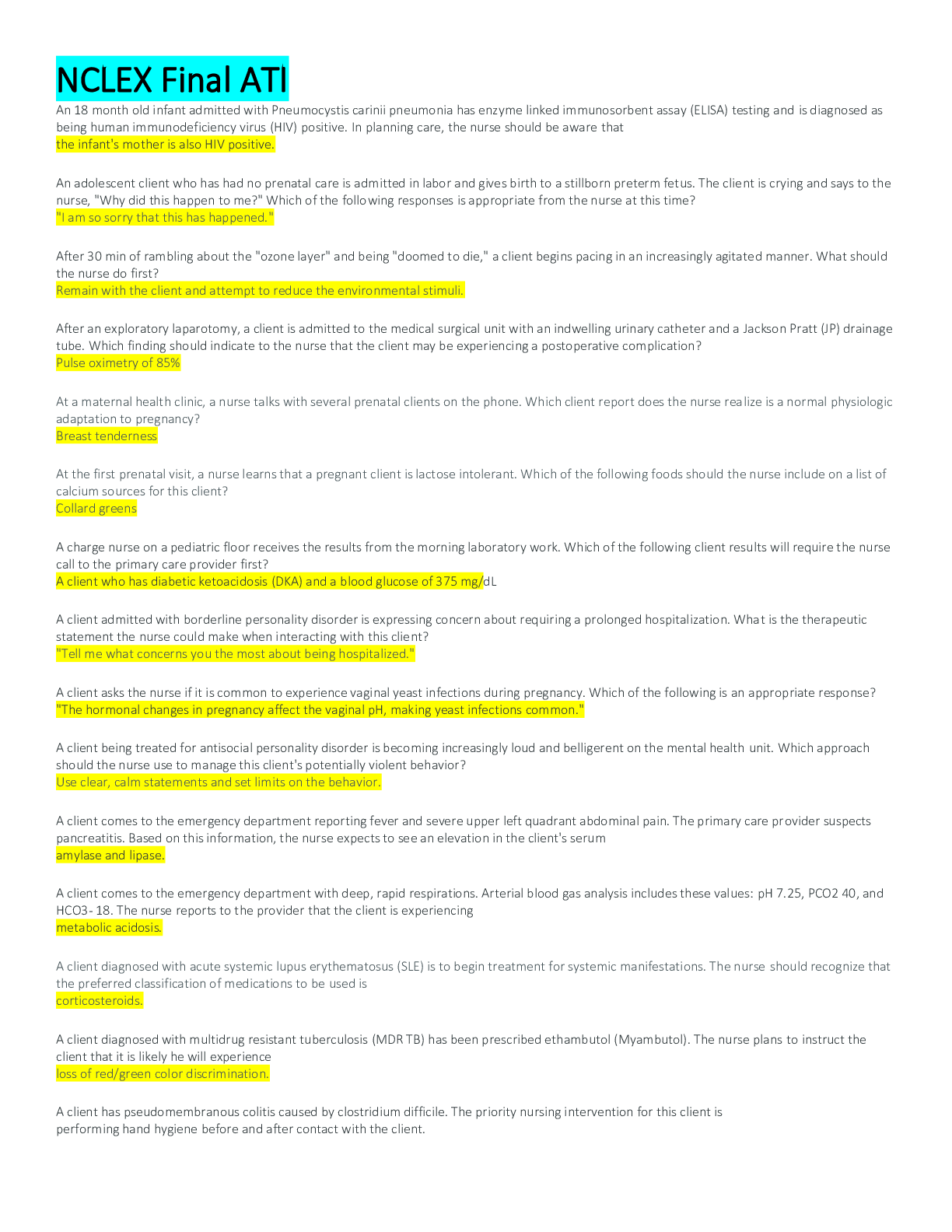
.png)


